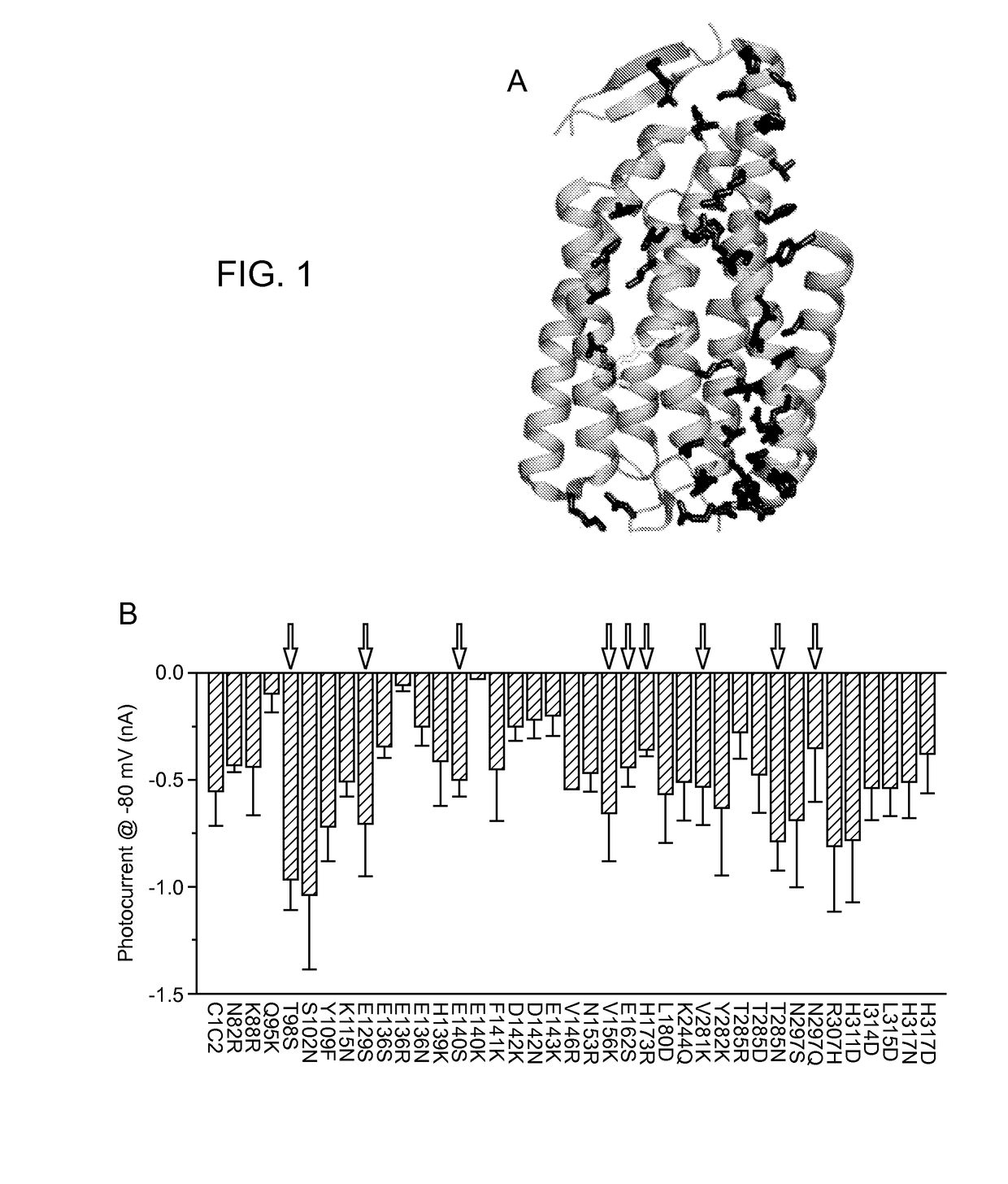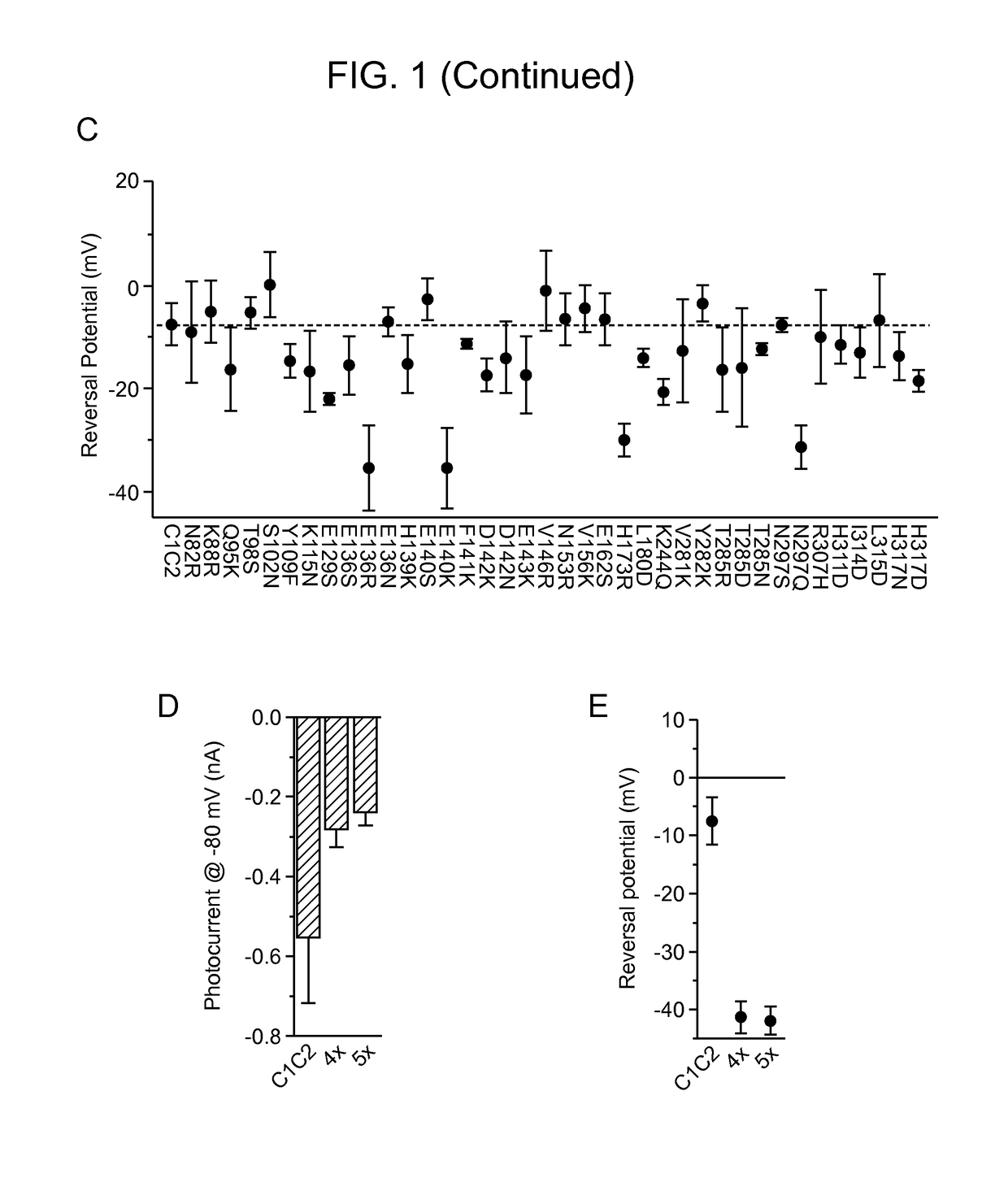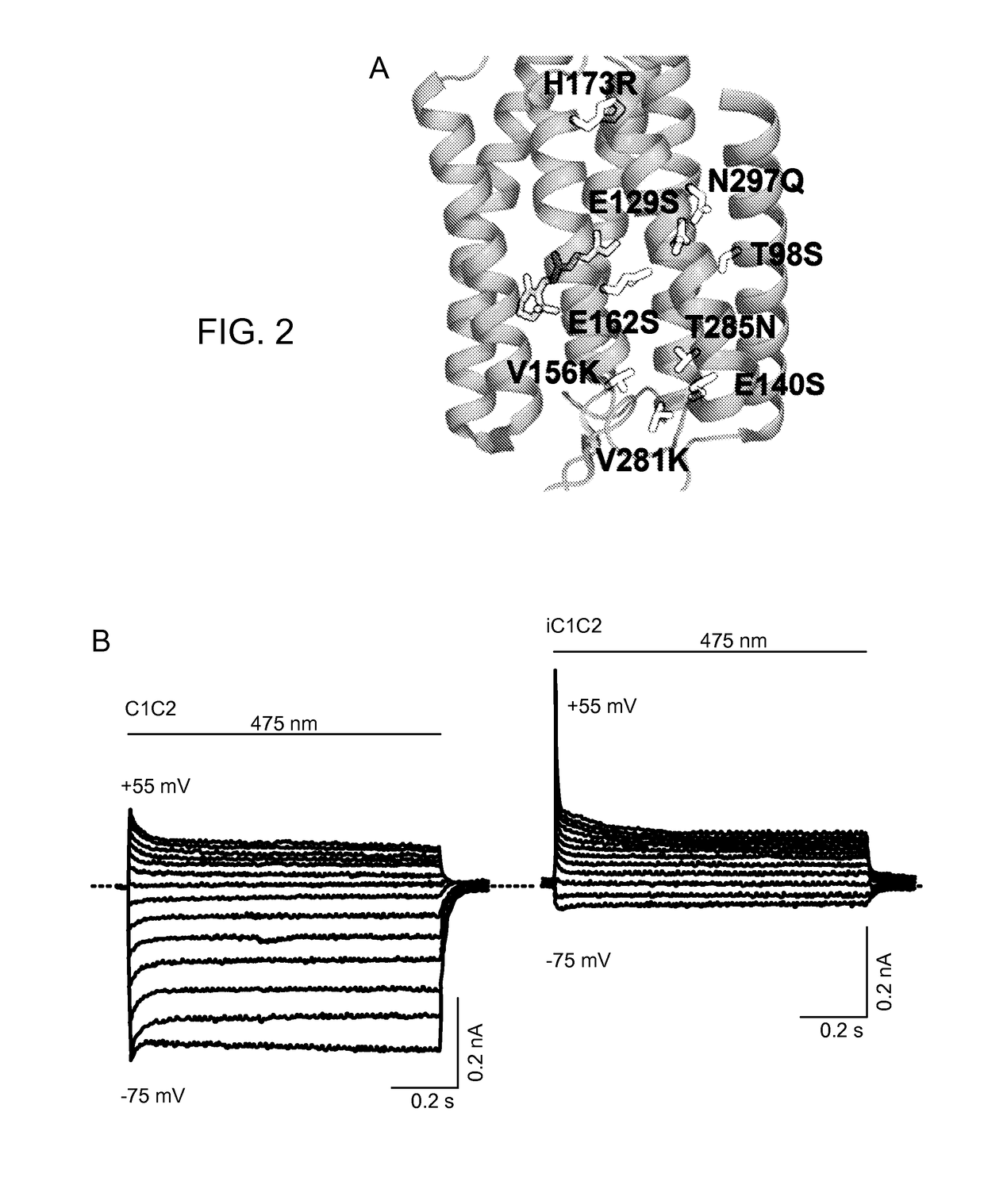Engineered light-activated anion channel proteins and methods of use thereof
a technology of light-activated anion channels and proteins, which is applied in the direction of peptide/protein ingredients, peptide sources, therapy, etc., can solve the problems of inefficiency of available optogenetic proteins that direct move ions to achieve silencing, and achieve the effect of facilitating expression of these polypeptides
- Summary
- Abstract
- Description
- Claims
- Application Information
AI Technical Summary
Benefits of technology
Problems solved by technology
Method used
Image
Examples
example 1
-Guided Screen for Light-Activated Anion Channel Proteins
[0340]A structure-guided screen was conducted by introducing single site-directed mutations into C1C2 (FIG. 1, Panel A). All variants were expressed in cultured rat hippocampal neurons and photocurrents were tested using a whole-cell patch-clamp to ensure proper function in neurons (external / internal [Cl−]: 147 mM / 4 mM). Stationary photocurrent amplitudes were quantified across a range of holding potentials (FIG. 1, Panel B), with particular attention to Vrev to identify permeability variants (FIG. 1, Panel C). C1C2 exhibited Vrev of −7 mV under these conditions, typical for non-specific cation channels. Certain mutations with powerful effects on Vrev displayed concomitant adverse effects on photocurrent sizes (e.g. E136R and E140K; FIG. 1, Panel B), and were not studied further. More promising mutations, such as N297Q and H173R, exhibited both potent currents and altered Vrev (FIG. 1, Panel C), and were combined in a series o...
example 2
n of Light-Activated Anion Channel Proteins in Cultured Neurons
[0344]C1C2 and iC1C2 were expressed, each fused to enhanced yellow fluorescent protein (eYFP), in cultured hippocampal neurons (FIG. 5). Mean resting potentials were not different (C1C2: −65 mV; iC1C2: −69 mV) and input resistances were in the expected range (above 200 MΩ) for both constructs. Vrev was determined (FIG. 3, Panel A), which for iC1C2 (Vrev=−64 mV) was negatively shifted by 56 mV compared to C1C2 (Vrev=−7 mV) (FIG. 3, Panel B). This Vrev of iC1C2 lies more negative than the measured threshold for AP generation (VAP=−55 mV) (FIG. 3, Panel C). Consequently at VAP, in voltage clamp C1C2 generated an inward-directed photocurrent of −475 pA, while iC1C2 produced an outward-directed photocurrent of +42 pA; in current clamp, C1C2 depolarized neurons by +20 mV while iC1C2 hyperpolarized neurons by −3 mV (FIG. 3, Panel D). In addition, input resistance dropped by about 50% during light in cells expressing iC1C2, indi...
example 3
Interruption of Signaling Between Neurons
[0348]A network comprising two or more neurons that communicate with one another is identified. A target neuron in the network is identified and a nucleic acid encoding a subject light-activated anion channel polypeptide is introduced into the target neuron. The introduction of the nucleic acid into the target neuron causes the light-activated anion channel polypeptide to be expressed by the neuron and localized to the plasma membrane of the neuron. Subsequently, the target neuron, or a portion thereof, is illuminated with light of an activating wavelength. The illumination causes the light-activated anion channel polypeptide to open its anion channel pore, which allows chloride anions to enter the neuron and hyperpolarize the plasma membrane. The hyperpolarization of the plasma membrane of the neuron inhibits signaling between two or more neurons in the network by inhibiting the formation of an action potential in the target neuron.
PUM
| Property | Measurement | Unit |
|---|---|---|
| wavelength | aaaaa | aaaaa |
| wavelength | aaaaa | aaaaa |
| membrane potentials | aaaaa | aaaaa |
Abstract
Description
Claims
Application Information
 Login to View More
Login to View More - R&D
- Intellectual Property
- Life Sciences
- Materials
- Tech Scout
- Unparalleled Data Quality
- Higher Quality Content
- 60% Fewer Hallucinations
Browse by: Latest US Patents, China's latest patents, Technical Efficacy Thesaurus, Application Domain, Technology Topic, Popular Technical Reports.
© 2025 PatSnap. All rights reserved.Legal|Privacy policy|Modern Slavery Act Transparency Statement|Sitemap|About US| Contact US: help@patsnap.com



